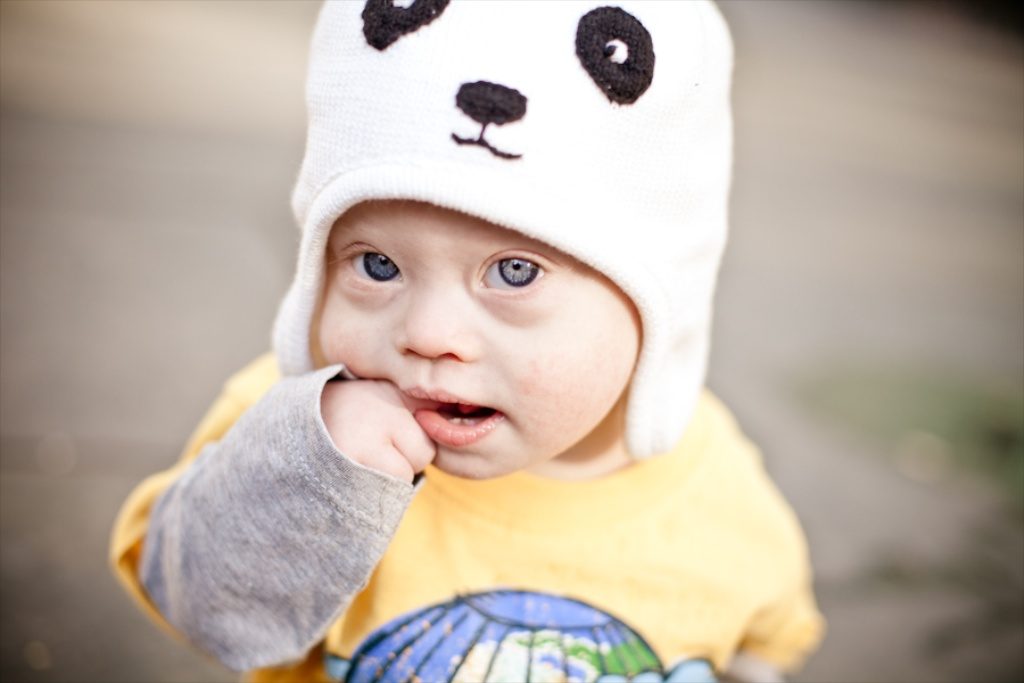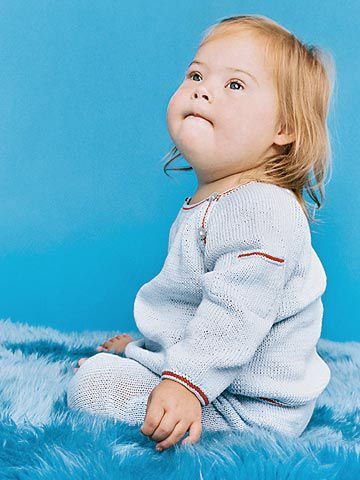HELP CHINA STAY HEALTHY
China Orphans NEED your help! Due to the widespread Coronavirus and limited supply of masks in China we are asking for donations to obtain child-sized medical masks. The Coronavirus is affecting so many in China in which the most susceptible to the virus are often young children. We will accept monetary donations at https://www.gwca.org/payment/ to purchase the masks or you may ship the masks to our headquarters: GWCA 248 Addie Roy Rd A102 Austin, TX 78746. Please help us protect these vulnerable children from this deadly virus.
Read More
New China Kids on Listing
We have added new kiddos on our photo listing. Go check these cuties out!
It’s Down Syndrome Month BABY!

What is Down Syndrome?
In every cell in the human body, there is a nucleus, where genetic material is stored in genes. Genes carry the codes responsible for all of our inherited traits and are grouped along rod-like structures called chromosomes. Typically, the nucleus of each cell contains 23 pairs of chromosomes, half of which are inherited from each parent. Down syndrome occurs when an individual has a full or partial extra copy of chromosome 21.
This additional genetic material alters the course of development and causes the characteristics associated with Down syndrome. A few of the common physical traits of Down syndrome are low muscle tone, small stature, an upward slant to the eyes, and a single deep crease across the center of the palm – although each person with Down syndrome is a unique individual and may possess these characteristics to different degrees, or not at all.
Down Syndrome Adoption:

A Child with down syndrome is a blessing for his or her siblings, not a curse. “I wish I had known that having a child with Down syndrome would make her older sister even more kind and empathetic. Sharing the spotlight has made her happy, not resentful.” —Shannon Striner
GWCA|CAN has a growing list of children with Down syndrome who are available for adoption—especially in our China Program. Many children around the world have been placed into families as a result of the awareness of the great need for adoptive families willing to make a precious child with Down syndrome part of their family. We want to expand our efforts in advocating for this amazing group of children by sharing just a few of those available on our Photo Listing. We add 5 children to our wait list so be sure to check out our “New Kids on the Block”.
These are just facts, and like all facts, they can fail to provide a full picture. The truth is that children born with Down syndrome can absolutely go on to live happy and long lives. And with Down Syndrome Awareness Month every October, we can be inspired to learn more about this topic and to celebrate people born with Down syndrome and the medical advancements that increasingly improve their quality of life.
When Was Down Syndrome Discovered?
For centuries, people with Down syndrome have been alluded to in art, literature and science. It wasn’t until the late nineteenth century, however, that John Langdon Down, an English physician, published an accurate description of a person with Down syndrome. It was this scholarly work, published in 1866, that earned Down the recognition as the “father” of the syndrome. Although other people had previously recognized the characteristics of the syndrome, it was Down who described the condition as a distinct and separate entity.
In recent history, advances in medicine and science have enabled researchers to investigate the characteristics of people with Down syndrome. In 1959, the French physician Jérôme Lejeune identified Down syndrome as a chromosomal condition. Instead of the usual 46 chromosomes present in each cell, Lejeune observed 47 in the cells of individuals with Down syndrome. It was later determined that an extra partial or whole copy of chromosome 21 results in the characteristics associated with Down syndrome. In the year 2000, an international team of scientists successfully identified and catalogued each of the approximately 329 genes on chromosome 21. This accomplishment opened the door to great advances in Down syndrome research.
Are There Different Types of Down Syndrome?
TRISOMY 21 (NONDISJUNCTION)
Down syndrome is usually caused by an error in cell division called “nondisjunction.” Nondisjunction results in an embryo with three copies of chromosome 21 instead of the usual two. Prior to or at conception, a pair of 21st chromosomes in either the sperm or the egg fails to separate. As the embryo develops, the extra chromosome is replicated in every cell of the body. This type of Down syndrome, which accounts for 95% of cases, is called trisomy 21.
MOSAICISM
Mosaicism (or mosaic Down syndrome) is diagnosed when there is a mixture of two types of cells, some containing the usual 46 chromosomes and some containing 47. Those cells with 47 chromosomes contain an extra chromosome 21.
Mosaicism is the least common form of Down syndrome and accounts for only about 1% of all cases of Down syndrome. Research has indicated that individuals with mosaic Down syndrome may have fewer characteristics of Down syndrome than those with other types of Down syndrome. However, broad generalizations are not possible due to the wide range of abilities people with Down syndrome possess.
TRANSLOCATION
In translocation, which accounts for about 4% of cases of Down syndrome, the total number of chromosomes in the cells remains 46; however, an additional full or partial copy of chromosome 21 attaches to another chromosome, usually chromosome 14. The presence of the extra full or partial chromosome 21 causes the characteristics of Down syndrome.
How to Observe Down Syndrome Awareness Month

“A different life is not a ‘less than’ life. Difference makes the world a richer place to live.”Courtesy of Jillian Benfield
- Join a Buddy Walk: According to the National Down Syndrome Society, the Buddy Walk “has grown to be the world’s largest and most recognizable Down syndrome awareness program with over 250 walks taking place in 50 states and select international countries.”
- Volunteer: There are plenty of things you can do during Down Syndrome Awareness Month, but volunteering with one of the many Down syndrome advocacy groups is one of the best and most effective.
- Spread the word: The Down Syndrome Information Alliance suggests celebrating Down Syndrome Awareness Month by carrying out 31 random acts of kindness — one for each day in October.
China Heritage Tour

About:
We have launched our winter 2019 China Heritage Tour! Over the years, we have been touched by loving families who have adopted children from China. Our China Heritage Tour has received a lot of attention over the years and we are grateful for our families we have previously participated because it has enabled us to gather valuable information.
As life moves on for your adopted child you may find that many of them want to go back to where their life journey began. If your adopted child wants to know more about their roots, culture and to form a better understanding of how their story began than this is the trip for you!
During this exciting 8 day tour you will visit 6 cities and some of China’s greatest national treasures.
- Cities: Beijing, Xian, Chengdu, Guilin, Yangshuo, and Guangzhou.
- National Treasures: The Forbidden City, Terra Cotta soldiers, the Great Wall and much more!
This is truly a once in a lifetime opportunity to experience Chinese culture and connect your child to their homeland. You may also choose to add an extended tour which includes visiting your child’s orphanage at the end of your trip.

Pricing:
The experience and resources we have accumulated over the years allows us to offer you an unbeatable price. The cost for our 2019 trip is $2,149/person with a minimum of 3 travelers. We do limit the total number of participants to 20 people and spots fill up quickly! To reserve a spot for your family please submit the $200/person (non-refundable) fee via https://www.gwca.org/payment/. This fee will go towards the programs total cost. The remainder of the payment must be provided via Cashier Check.
Our price includes:
- One standard room with king bed or 2 full sized beds. Extra charge for an additional roll away cot .
- Daily breakfast at the hotel.
- Intra-China Airline/Bullet Train transportation fee.
- Sightseeing admission fees
- Airport/Train Station pick up service.
- Ground transportation driver in all cities listed in itinerary.
- Special cultural shows, tours & amusement
- Hands-on crafts & Chinese Historical & Cultural Arts
- Chinese and English bilingual guide.
Our price does NOT include:
- International airfare to and from China
- Food and snacks other than daily breakfast and specified meals in the itinerary
- Travel insurance
- Obtaining a Passport or Visa (GWCA can assist in securing a temporary visa)
- Additional side trips in China. Ask your Travel Adviser about additional options available, from cities to tours, that are not listed on our current itinerary.
- Laundry and room service fees.
- Orphanage visit fee. You will be responsible for transportation, activities & hotel. Itineraries will depend on your province and orphanage availability.
(please contact your travel adviser for an estimate and more information) - All traveler ’s MUST sign and agree to our Terms and Conditions & our Winter Journey Policy/Waiver. We must receive a copy of both documents with each traveler ’s signature before you are cleared to participate.
- NOTE:
- Pricing will change with each travel option available.
- The pricing listed here is only applicable for this tour.

Itinerary
Day 1
Arrive at the airport in Beijing where you will be welcomed by your bilingual guide and driven to the hotel
Day 2
Morning: Tianan-Men Square & Forbidden City Tour
Afternoon: Visit the Great Wall and Jade Factory Tour (group lunch)
Evening: Peking Roast Duck Dinner
Day 3
Morning: Depart for Chengdu via flight
Afternoon: Meet your local guide at the Chengdu airport and check into the hotel
Enjoy tea at a local park and experience local culture & cuisine.
Evening: Enjoy Sichuan Variety Show! An ancient Chinese dramatic art that is part of the Sichuan opera.
Day 4
Morning: Visit China’s famous Panda Reserve!
Afternoon: Visit the historical and well-preserved Jinli Ancient Street. A unique commercial street decorated in rows of ancient buildings and the perfect place to shop and find local snacks
Day 5
Morning: Depart for Xian via train
Afternoon: Walk or bike the Great Wall before checking into the hotel
Day 6
Morning: Visit the Terra Cotta Museum and a Terra Cotta Figure Making factory
Afternoon: Depart for Guilin via flight and be welcomed by our local guide before checking into the hotel
Day 7
Morning: Enjoy the Li River Cruise to Yangshuo before checking into the hotel
Afternoon: Learn how to cook Chinese cuisine at a local Cooking School
Evening: Enjoy the magical folk tale performance of “Liu Sanjie Impression Show”
Day 8
Morning: Drive to Guilin
Afternoon: Take the train to Guangzhou which concludes your trip
Day 9-12
Optional Extended Tour: Our China Heritage Tour has an additional option for families looking more extensively into their child’s upbringing. This includes a tour of your child’s orphanage, file information, cultural background, DNA testing and other desired information while in country (depending on province & orphanage).
**Please use this plan as a reference as your actual schedule may vary dependent on your families preference & customization.**

Contact Information:
Veronica Quan:
veronica@childrenofallnations.com
How to Raise a Child With Down Syndrome: Advice and Resources

If your child is diagnosed with Down syndrome, what are your next steps? A mother of a child with Down syndrome shares her recommendations.
Down syndrome occurs in one of 691 births, or 6,000 births per year in the U.S., as a result of the presence of an extra chromosome 21 at conception. Although individuals with Down syndrome tend to experience some health problems throughout their lives, recent medical advances have increased their life expectancy. Moreover, parents of children with Down syndrome have access to therapeutic and educational supports through early intervention and the public school system. A recent study published in the American Journal of Medical Genetics demonstrates the positive impact of Down syndrome on families; it found that 79 percent of parents report that their outlook on life was more positive because of their child, 94 percent of siblings report feelings of pride about their sibling with Down syndrome, and 99 percent of people with Down syndrome feel happy with their lives.
Gerald Mahoney, Ph.D., who developed a research-based strategy called Responsive Teaching for improving cognition, behavior, and communication in children with special needs, says: “Parents are far more influential on their children’s development than teachers and therapists are. Early developmental learning for all children can occur in the context of any interaction or activity the child is participating in throughout their day. And parents, especially in the first five years, have much more opportunity to interact with their children than do teachers in classrooms or related service specialists.” In other words, our role as parents makes a big difference in our children’s development.
When our older daughter, Penny, was diagnosed with Down syndrome at birth, it felt daunting to consider the medical, social, educational, and behavioral challenges ahead. I had no idea how much support and encouragement we would receive from family, friends, and the larger community of other parents with kids with Down syndrome, as well as from dedicated and caring therapists, teachers, and medical professionals. Although we have many years to come, and many lessons to learn as we parent Penny and our other children, here are a few pieces of advice. Children with Down syndrome can bring a lot of happiness to a family. Living with the motto ‘She can do anything you can do,’ one dad of four describes how his youngest enriches their everyday life.
Learn the Facts First
There’s a lot of misinformation about Down syndrome, and for women who have received a prenatal diagnosis and for women who have just given birth and received a diagnosis for their child, accurate and up-to-date information is critical in making decisions and maintaining a realistic and positive attitude for the future. According to Stephanie Meredith, writer of Understanding a Down Syndrome Diagnosis, a booklet that offers current information for medical professionals to deliver a diagnosis, “Most of the misinformation that exists is simply outdated information before early intervention, inclusion, and progressive healthcare were the norm. Since society has begun investing in children with Down syndrome, life expectancy has doubled to about 60, and people with Down syndrome are increasingly completing high school, attending special college programs, and living independently.”
The National Down Syndrome Society provides checklists for doctors’ visits and other resources for medical intervention and support. But learning the facts about Down syndrome also involves understanding the social and emotional reality that most people with Down syndrome enjoy their lives, and that most families raising children with Down syndrome report positive benefits from their child’s presence. Siblings report greater compassion toward others, and parents report a lower divorce rate than the norm.
When understood from both a medical and social perspective, Down syndrome is no longer a negative diagnosis.
Resources:
- Down Syndrome Pregnancy: Diagnosis Information
- Woodbine House: Books on Down Syndrome Topics
- Band of Angels: Hopeful Stories and Photographs
- National Down Syndrome Society: Healthcare Guidelines
Get in Touch With Other Parents
One of the advantages of a Down syndrome diagnosis, in contrast to rare or undiagnosed conditions and syndromes, is that it is easy to connect with other parents who are raising kids with Down syndrome. Two major national organizations — the National Down Syndrome Society (www.ndss.org) and the National Down Syndrome Congress (ndsccenter.org) — provide support to parents through information and conferences. Inspirational stories are also available in the online book My Great Story (www.ndss.org/stories). The NDSS advocates on behalf of people with Down syndrome in Congress in order to secure funding for research and social programs that will provide support in school, at home, and in the workplace.
Many local communities have support groups for families. You can find a local group through the affiliates page on the NDSS website or by contacting a social worker in your area. In general, the Internet offers support to parents of children with Down syndrome and with other disabilities. Search “Down syndrome” on Facebook to find groups and connect with others or search for reputable blogs and websites to read personal stories and get advice.
Resources:
- National Down Syndrome Congress
- Blog: Holland Bloorview Kids Rehabilitation Hospital
- Blog: Support for Special Needs
- Blog: Hopeful Parents
- National Down Syndrome Society: Affiliates
Organize Relevant Information
A child with Down syndrome is just like any other child, needing doctors’ appointments, back-to-school clothes, and rides to birthday parties. Children with Down syndrome, though, have regular visits to medical specialists as well, and their parents meet regularly not only with classroom teachers (or case managers for younger children) but also with therapists, special educators, and other professionals. Developing a system to keep relevant information on hand provides a historical perspective for you and for the doctors and teachers involved, and enables others to care for your child in your absence.
Start keeping track of your child’s chronic health, treatments, and education records. Both the Children’s Hospital of Philadelphia and the Seattle Children’s Hospital offer guides to assembling Care Notebooks, 3-ring binders that include medical and educational information about your child. Their websites offer sample pages for these notebooks and a system to keep track of everything through the years.
Resources:
- The Children’s Hospital of Philadelphia: Quick Guide to a Care Binder
- The Center for Children with Special Needs: Care Notebook
Find Good Doctors, Therapists, and Specialists
Children with Down syndrome have a different set of guidelines for routine tests, and a different set of growth charts. They benefit from regular appointments with specialists and therapists along with visits to a local pediatrician who can perform routine physicals and treat common illnesses.
Mary Pipan, M.D., Clinical Director of The Trisomy 21 Program at the Children’s Hospital of Philadelphia, explains the difference it can make to have at least one visit with a developmental pediatrician who specializes in Down syndrome. “A pediatrician who sees many children with Down syndrome has the knowledge to evaluate what areas are important to cover specifically, and how various diagnoses are best evaluated and treated. General pediatricians do not usually have the time to be as thorough as needed, and most pediatricians have only a handful of patients in their practice with Down syndrome, so they don’t have the breadth of experience acquired in a dedicated Trisomy 21 program.”
The National Down Syndrome Society provides a link to the most up-to-date health care guidelines. In addition, many major children’s hospitals have clinics devoted specifically to caring for children with Down syndrome.
Resource:
Put Together Your Village
One of the joys of raising children comes from sharing their accomplishments with others. Many friends and family members would love to offer support, encouragement, and delight when your child learns new things.
According to Sue Levine, who conducted a six-year study of individuals with Down syndrome and their parents and siblings, published in American Journal of Medical Genetics, “Having a family member with Down syndrome tends to be an eye-opening and enriching experience. Brothers and sisters told us that they have more patience and acceptance because of their sibling. They treasure the small things in life, having learned important lessons in compassion and responsibility. The majority of parents shared with us that their outlook on life is more positive because of their child with Down syndrome. They affirmed that true success in life is not measured by accomplishments or possessions, but by love and small victories. While there are certainly struggles, as there are with parenting any child, the joys tend to far outweigh the difficulties.”
The benefits of knowing a person with Down syndrome can extend beyond the immediate family and into the community. If you and your family have already been involved in a faith community, stay involved. You may have to work with your local church, synagogue, mosque, or other place of worship to create structures and practices that allow your child to be included. The Elizabeth M. Boggs Center on Developmental Disabilities at Robert Wood Johnson Medical School offers a list of resources for congregations and leaders of many different faith communities so that families with children who have disabilities can remain active members.
Resource:
Remember Your Child Is a Child First
As soon as Penny was born, I stumbled as I tried to describe her. It seemed somewhat inaccurate to call her my “Down syndrome baby” and yet I didn’t have another way to talk about her. I soon discovered “people-first” language, a way of using language to reflect the reality that children with Down syndrome are children first. I learned to refer to Penny as a “baby with Down syndrome” to emphasize her common humanity. This linguistic shift helped me to stop seeing her as a diagnosis and instead to perceive her as a child with particular needs.
Participate in whatever activities you both enjoy. For infants and toddlers, this might include playdates with other friends, joining a local music class or story hour, or just going to the grocery store together. As your child gets older, look for activities designed for children with special needs, often called “adaptive” programs. The Special Olympics runs a Young Athletes program for children ages 2? to 7, provides developmentally appropriate support for your child, and offers an array of informational and educational workshops for parents.
Resource:
Prioritize Communication
Low muscle tone and an array of other factors that often contribute to delayed speech and difficulty with articulation can affect kids with Down syndrome. Thankfully, speech therapists offer strategies to strengthen your child’s muscles and improve communication. The same muscles are used in both eating and speaking; feeding therapy, a precursor to speech therapy, often begins within the first year of your child’s life.
Many children with Down syndrome want to communicate, and will be able to communicate, months or years before their mouths will produce intelligible words. According to Brian Skotko, M.D. (www.brianskotko.com), a specialist in the Down syndrome Program at Children’s Hospital Boston, “Children with Down syndrome have a lot to say and they deserve to be heard and to be listened to, but while we are waiting for the language to set in it is imperative that we give them ways to communicate their wishes and desires. Sign language is one form, and many use picture communication symbols as they get older and other augmentative devices as they become whizzes at technology.” These various forms of communication “decrease frustration and behavioral problems while increasing relationships and friendships in those formative years.”
For infants and toddlers, baby sign language books, websites, and videos exist to introduce both parents and children to simple sign language. The book Early Communication Skills for Children with Down Syndrome, by Libby Kumin, Ph.D., offers further advice and resources for augmentative communication devices.
Resources:
- Baby Sign Language: Activity and Language Resources
- SigningTime.com: Preview and Purchase Sign Language Videos
Focus on Your Child’s Strengths
Although your child will face physical and developmental challenges, he or she will have a distinct personality and distinct strengths. It can be tempting to focus upon the things your child can’t do or isn’t interested in, but this type of attention leads to a negative cycle in which both you and your child become frustrated. Another approach for children with special needs is called Responsive Teaching, where parents and caregivers respond to the areas of interest and strength that the child already exhibits, leading to positive emotions and growth on both sides.
Gerald Mahoney, Ph.D., one of the pioneers of the Responsive Teaching approach, explains that when parents are trained to respond well to their child, it leads to increased cognition and communication. Mahoney’s program offers 65 different strategies to help parents learn to be responsive. He lists behaviors such as, “reciprocity, a balanced interaction where parent and child are contributing equally and responding to and effecting behavior of the other person; contingency, where the parent focuses on responding quickly and supportively to behaviors their child initiates; shared control or non-directiveness, when parents are moderately directive with their child, which allows him to be more responsive; parental affect, which focuses on parents’ expressiveness, enjoyment, and acceptance of their child; and interactive match, in which parents focus on doing things with their child that are matched to the current level of developmental functioning and behavioral ability.”
We had the opportunity to hear Dr. Mahoney speak when Penny was only two months old, and we tried to take his advice and focus on her many strengths. Keeping a positive attitude became easier as we realized that there are organizations, doctors, therapists, teachers, other parents, and family and friends who want to support and encourage us every step of the way. Penny is about to reach her sixth birthday, and Down syndrome has largely faded into the background of our family life as we have fallen more and more in love with our daughter.
Copyright © 2012 Meredith Corporation.
Amy Julia Becker blogs at Thin Places (www.patheos.com/blogs/thinplaces). She is the author of “A Good and Perfect Gift: Faith, Expectations, and a Little Girl Named Penny” and she lives with her husband and three children in New Jersey.
All content on this Web site, including medical opinion and any other health-related information, is for informational purposes only and should not be considered to be a specific diagnosis or treatment plan for any individual situation. Use of this site and the information contained herein does not create a doctor-patient relationship. Always seek the direct advice of your own doctor in connection with any questions or issues you may have regarding your own health or the health of others.
By Amy Julia Becker
